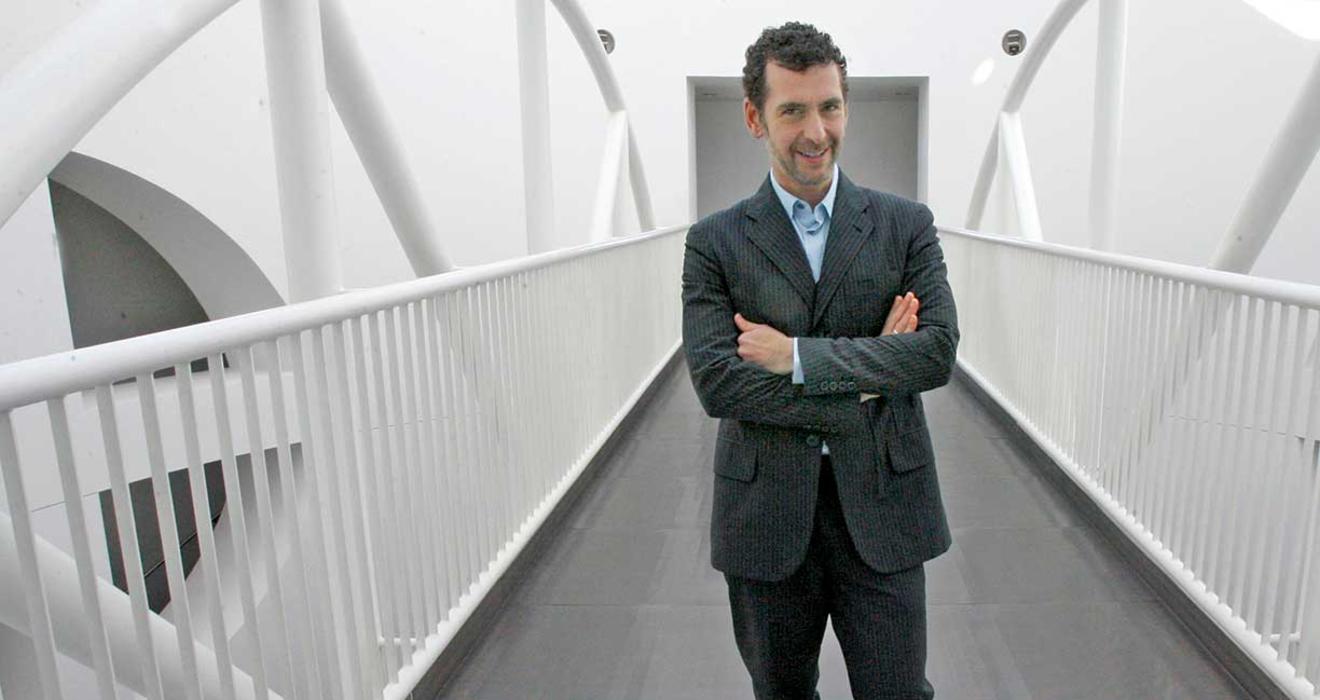
Henry Urbach ’84 *95 was always known as a deep thinker and planner. He often questioned convention and perception — and he challenged those around him to do the same.
Although he became renowned for his big ideas as an architecture and design scholar and curator, his sister, Barbara Urbach Lissner, recalls the smaller moments, such as how he always found the perfect place to hang a new picture in her home. “He was very generous in his observations and in his thinking,” she says.
His ideas and generosity defined him as he went on to earn degrees in architecture from Princeton and Columbia; opened his New York City gallery, Henry Urbach Architecture, in 1997; and rose in his field. And those traits remained even as he dealt with bipolar disorder, which led to his death.
It was within FitzRandolph Gate that Urbach met Stephen Hartman *84, who would become his husband of 36 years. The duo was one of the few openly gay couples on campus in the ’80s. A few years later, as a Princeton doctoral student, Urbach penned an essay examining the connection between the architectural history of the closet and the idea of coming out. “Gay people have learned to work with and against the closet,” he wrote, calling for society to reimagine the function of a closet — literally and figuratively — to loosen rigid perceptions of homosexuality.
In his career, Urbach dared to challenge conventions. His idea of showcasing architecture in a gallery, bridging art and architecture, was new. “He had an incredible vision, of course at a moment when nothing like that existed,” says Ada Tolla, a founding partner of architectural design studio LOT-EK who created projects for Urbach’s gallery. “For me, it’s even more relevant now because nothing like that still exists.”
He undertook ambitious projects, like a collaboration with Japanese artist Fujiko Nakaya to temporarily engulf Philip Johnson’s Glass House — where Urbach was director at the time — in fog, so it appeared to vanish. “This is really the dream of the Glass House, to disappear into the landscape,” Urbach said in an interview.
Hartman describes Urbach as a mentor to and collaborator with others: “a great connector” who “possessed the gift of gab.” “He could be very frivolous and find pleasure in everything,” says Joe Rosa, director of the Frye Art Museum in Seattle, “and that is rare, where you can talk to someone about critical theory and then be able to talk about just the sheer beauty of something.”
Urbach’s prominence made it that much more painful when, around the age of 50, he developed late-onset bipolar disorder — a mental illness that typically causes episodes of extreme mania and depression. Lissner recalls that her brother was hurt by those who drifted away as he got sick. “I don’t think most people understood the impact of the illness,” she says.
Aaron Betsky, president of the School of Architecture at Taliesin in Scottsdale, Ariz., acknowledged this in a memorial, writing: “I admit to being one of those who found it impossible, in later years, to engage in what I considered normal interactions with Urbach ... . I am sorry that I did not work through such difficulties, as now I will never be able to do so.”
Still, Urbach continued to reinvent himself, deciding in 2015 to start fresh in Israel, where he taught at the Bezalel Academy of Arts and Design. He died in the hospital after a difficult adjustment of his medication.
Carlett Spike is a PAW writer and assistant editor.
AUG. 17, 1963 | SEPT. 14, 2019






No responses yet